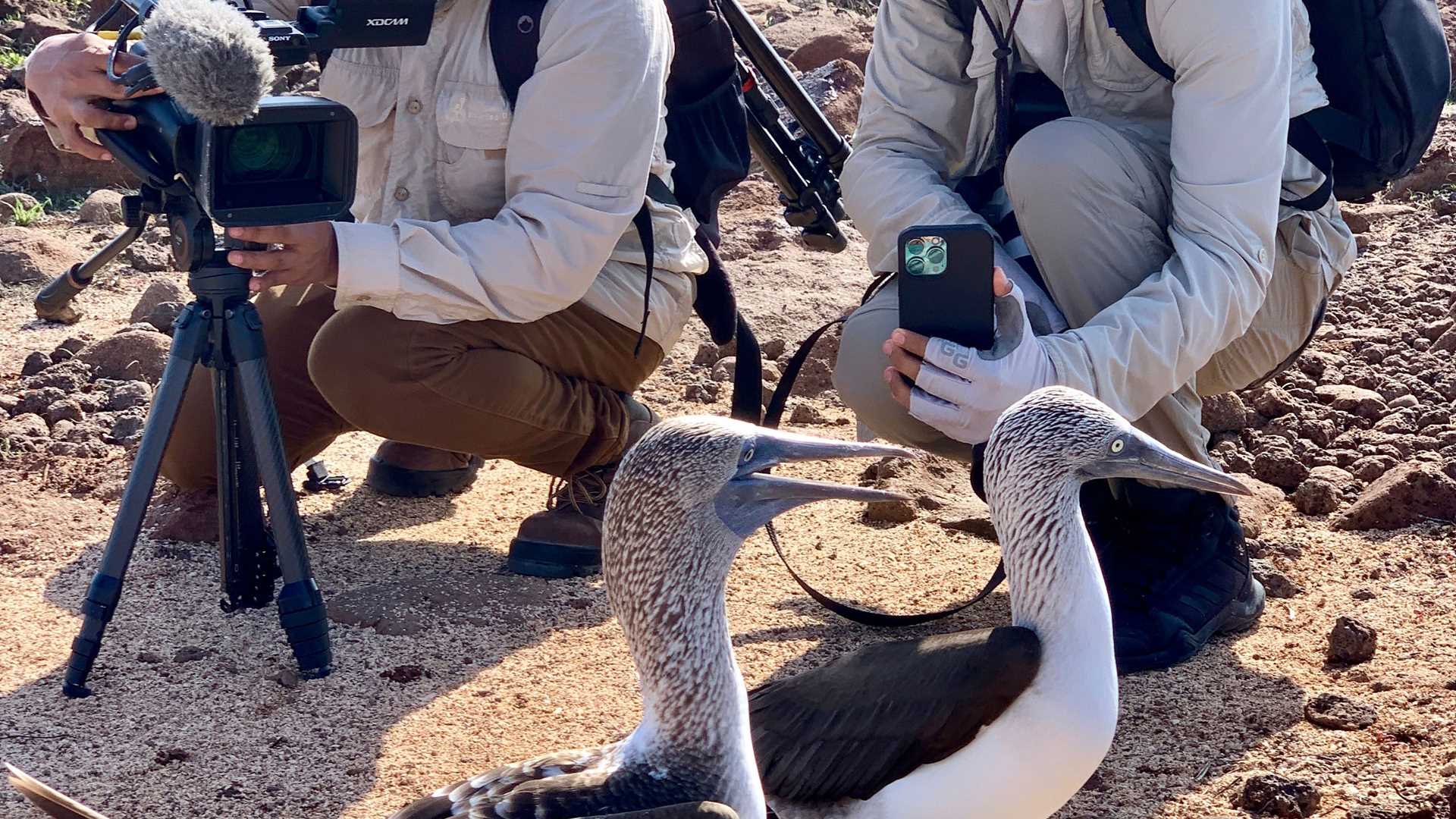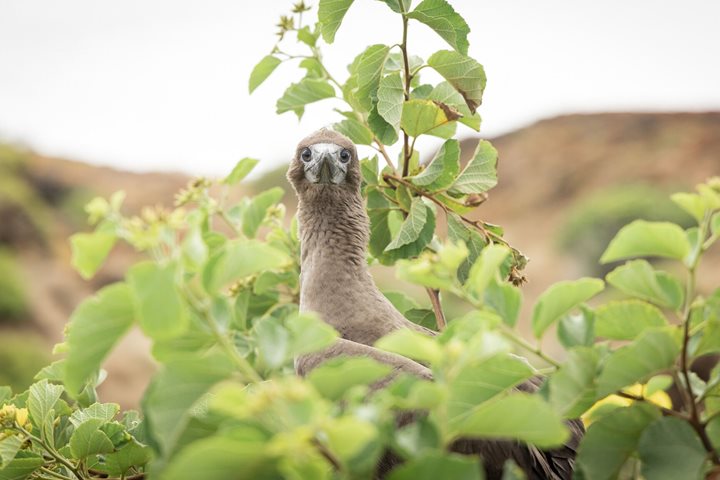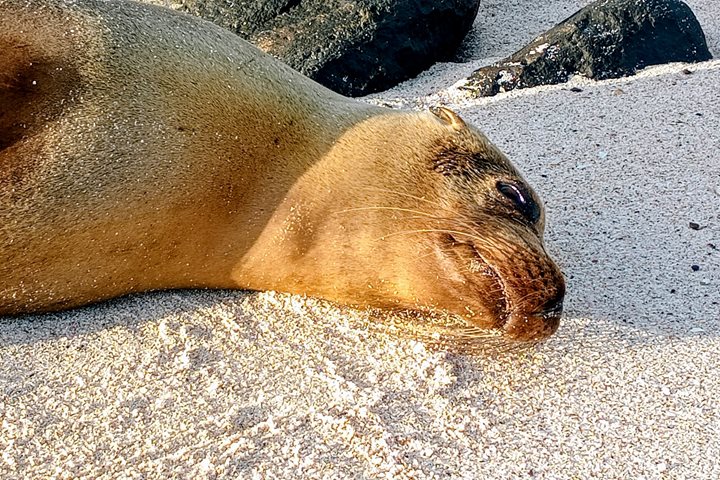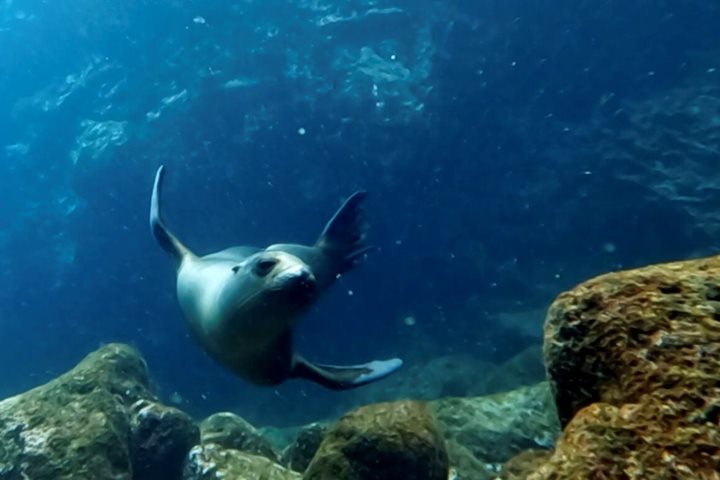The Panama flow influences the Galapagos Archipelago this time of year, so the vegetation is lush and green. Breeding terrestrial animals take full advantage of this. It is surreal to walk among the green vegetation while listening to the chirping sound of the famous and endemic Darwin finches.
The rain in the Galapagos will not last for very long. The Peru flow will bathe Galapagos with colder, nutrient rich waters. For this reason, a lot of frigatebirds and blue-footed boobies are preparing for nesting. They will have chicks in a few months, and the ocean will provide plenty of food to support them.
After an amazing full day on North Seymour and Rabida Islands, National Geographic Islander set sail toward the westernmost part of the archipelago. Isabela Island has five active volcanoes, and Wolf is the tallest. For the last two months, it has been pouring molten rock that almost reaches the ocean.
Our planet really is a special place when we coexist with Mother Nature.







